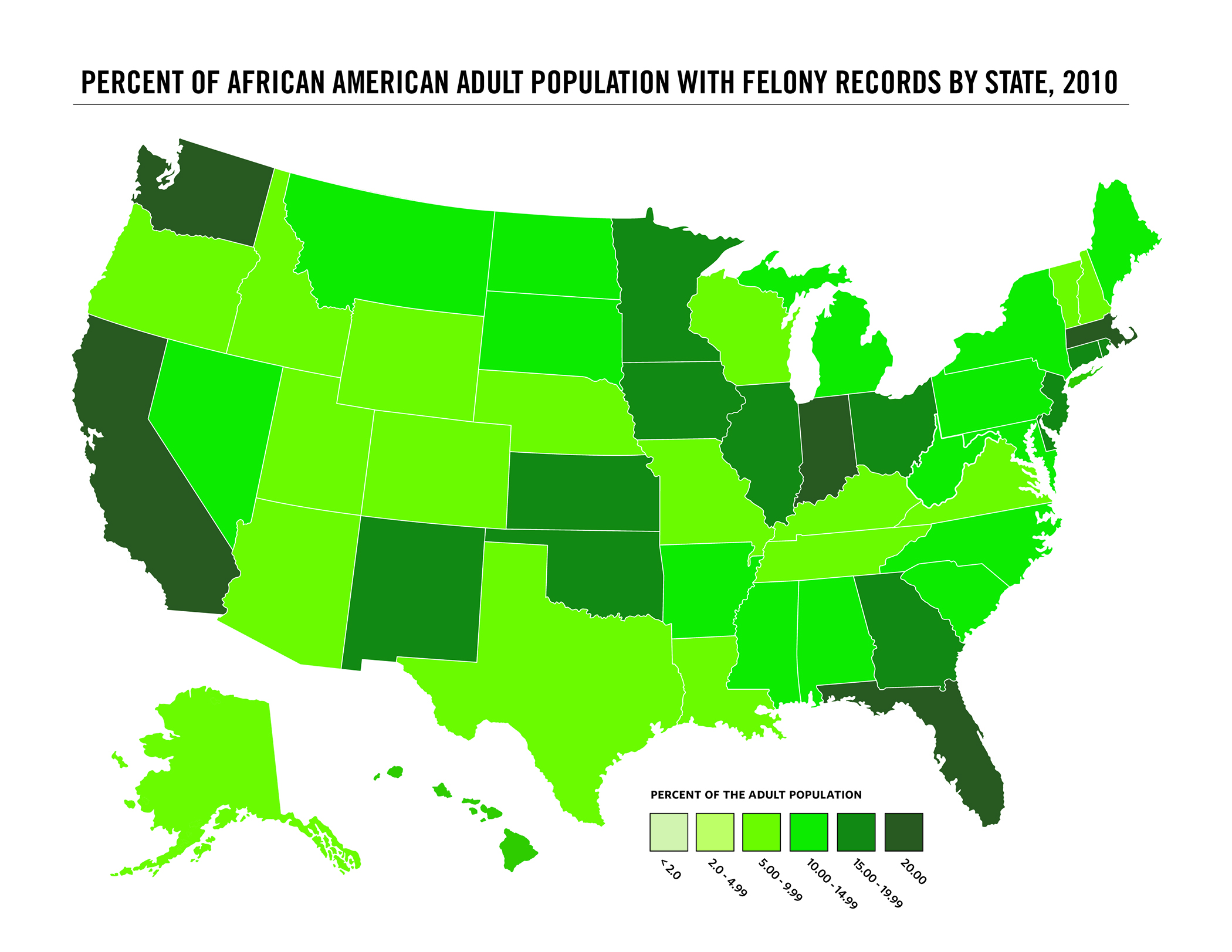New research led by a UGA sociologist on the scope and scale of felony convictions finds that as of 2010, 3 percent of the total U.S. population and 15 percent of the African-American male population have served time in prison. People with felony convictions—including those who were not imprisoned—more broadly account for 8 percent of the overall population and 33 percent of the African-American male population.
The study, published in the journal Demography, includes the first estimates of the felony conviction population and maps their distribution in the states, documenting dramatic growth since 1980.
“There’s been a great deal of scholarly and policy attention toward incarceration, and rightfully so, as it has very distinct consequences for people that have that experience, as well as their communities and families,” says Sarah Shannon, first author and assistant professor of sociology in the Franklin College of Arts and Sciences.
“But the larger population who also have felony convictions face many of the same types of stigma that come with having been incarcerated—lack of access to jobs, lack of access to housing and welfare support,” she says.
Because the U.S. does not maintain a national registry of data on people with felony convictions, Shannon and collaborators from five universities calculated estimates based on year-by-year data gathered by the U.S. Department of Justice. The researchers used demographic methods to estimate the numbers of deaths and of re-incarceration for each state over the years 1980 to 2010. Based on this aggregation of state data, they estimate that as of 2010 there were 19 million people in the U.S. with a felony record.
“In communities all over the country people are living, working, paying taxes or otherwise getting by all while facing the consequences of criminal justice experience that limit their life chances and also have spillover effects into our other social institutions,” Shannon says.
To a large extent, the growth in felony convictions has stemmed from changes in sentencing laws beginning in the 1970s that increased the likelihood and length of incarceration and probation for people caught up in the criminal justice system. Mandatory minimum sentencing laws, truth in sentencing laws, and three-strikes laws, for example, increased the population in prisons.
Political dynamics resulting in more aggressive enforcement and zealous prosecution contribute to higher rates of felony convictions, but those dynamics may shift as priorities change, particularly since the vast majority of funding for the criminal justice system comes at the state level, according to Shannon.
“Proponents of harsher punishments on the right and on the left in earlier decades are now grappling with the extraordinary fiscal and social costs of incarceration, particularly since the Great Recession, when states were really feeling the belts tighten around their budgets,” she says.

This story appeared in the spring 2018 issue of Research Magazine. The original press release is available at https://news.uga.edu/total-us-population-with-felony-convictions/.






